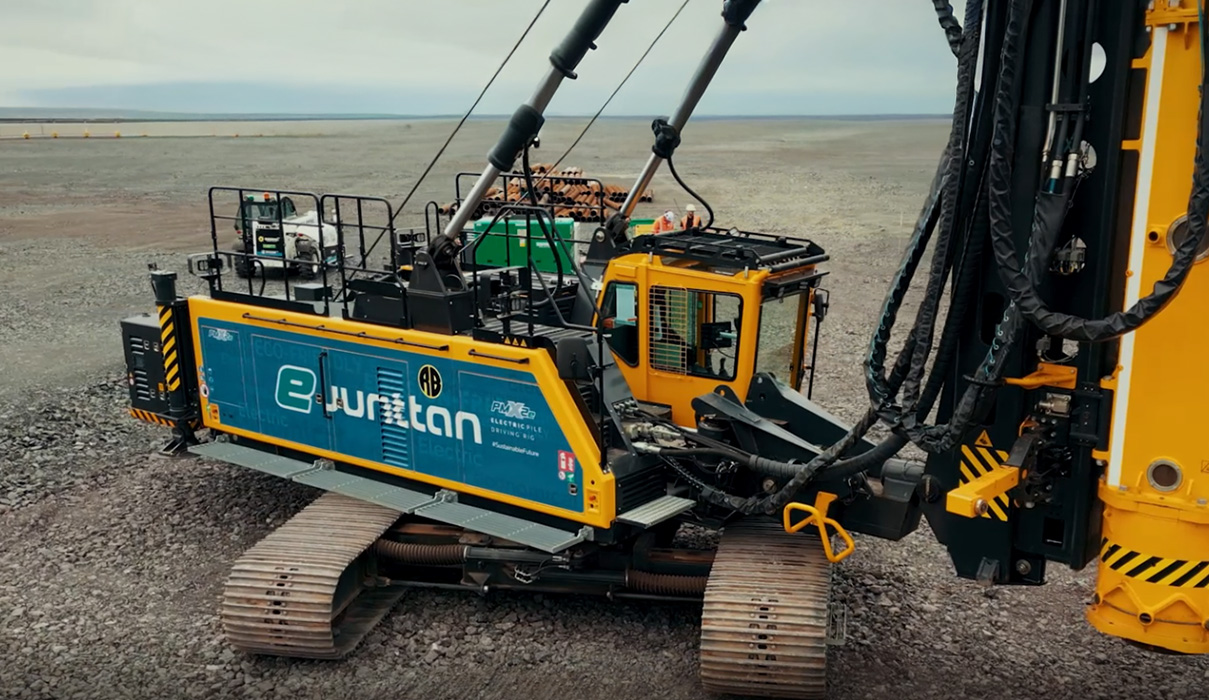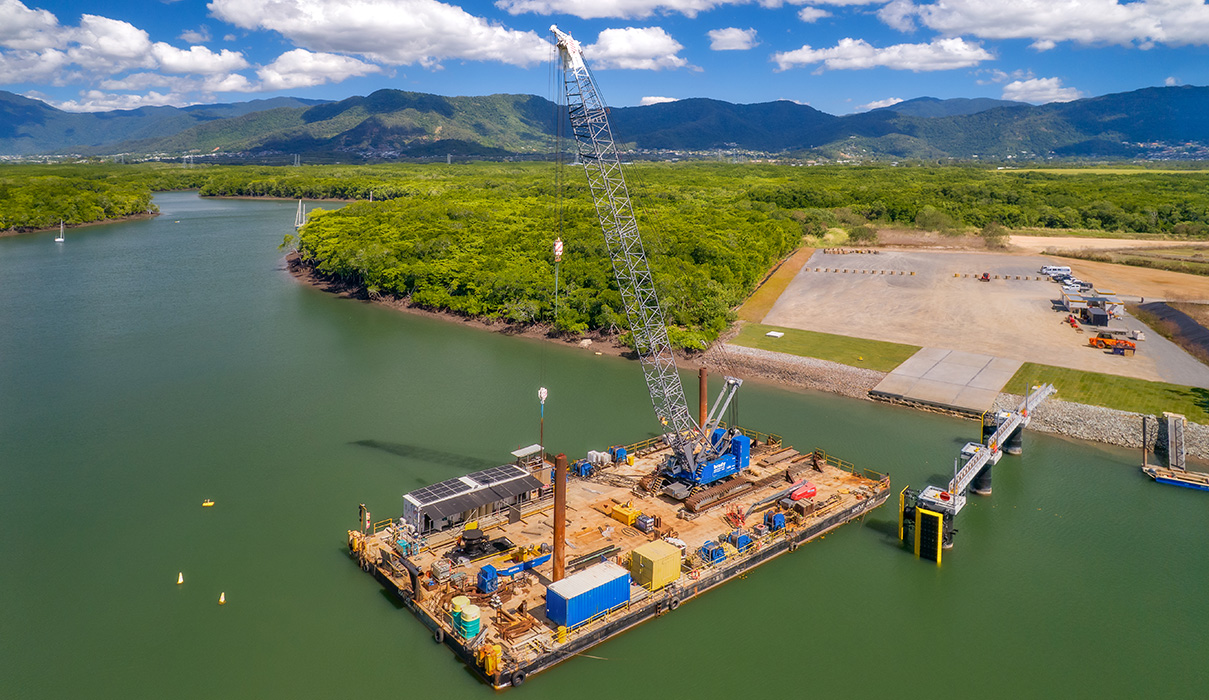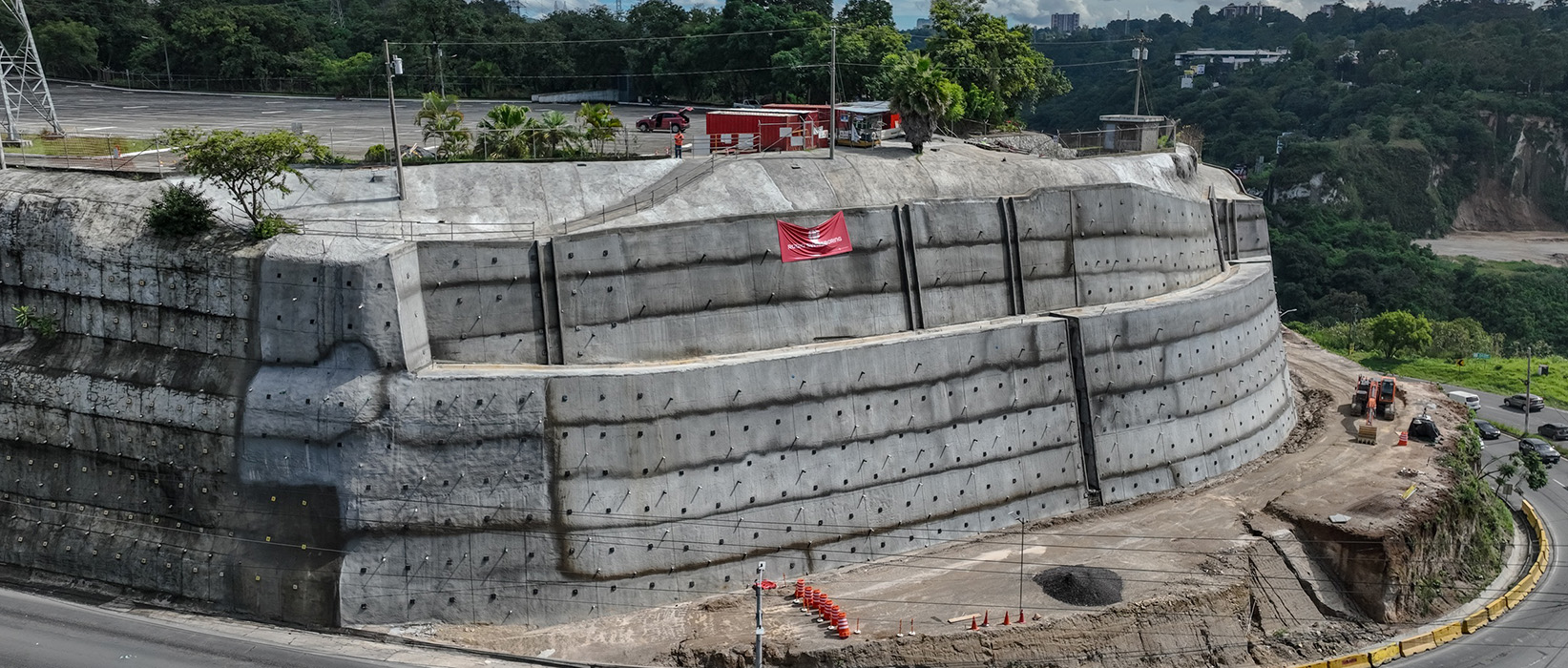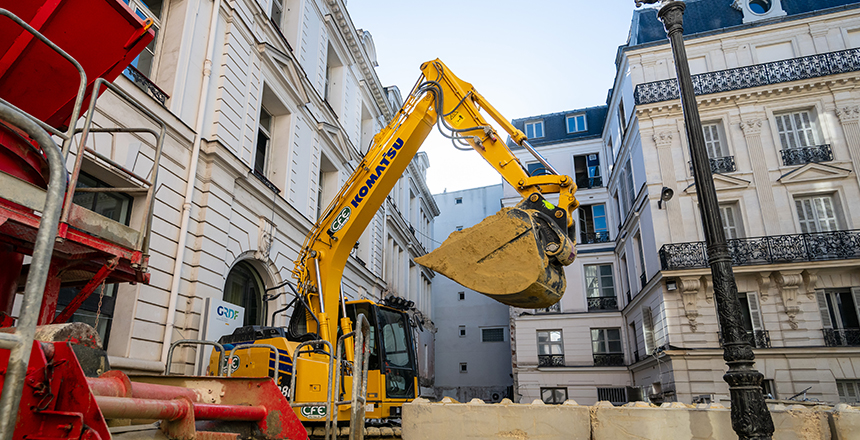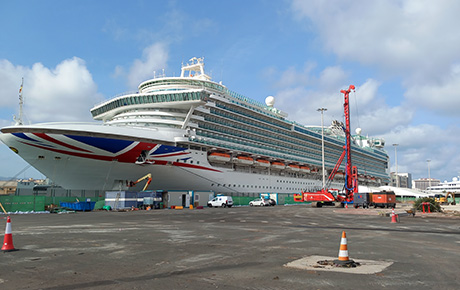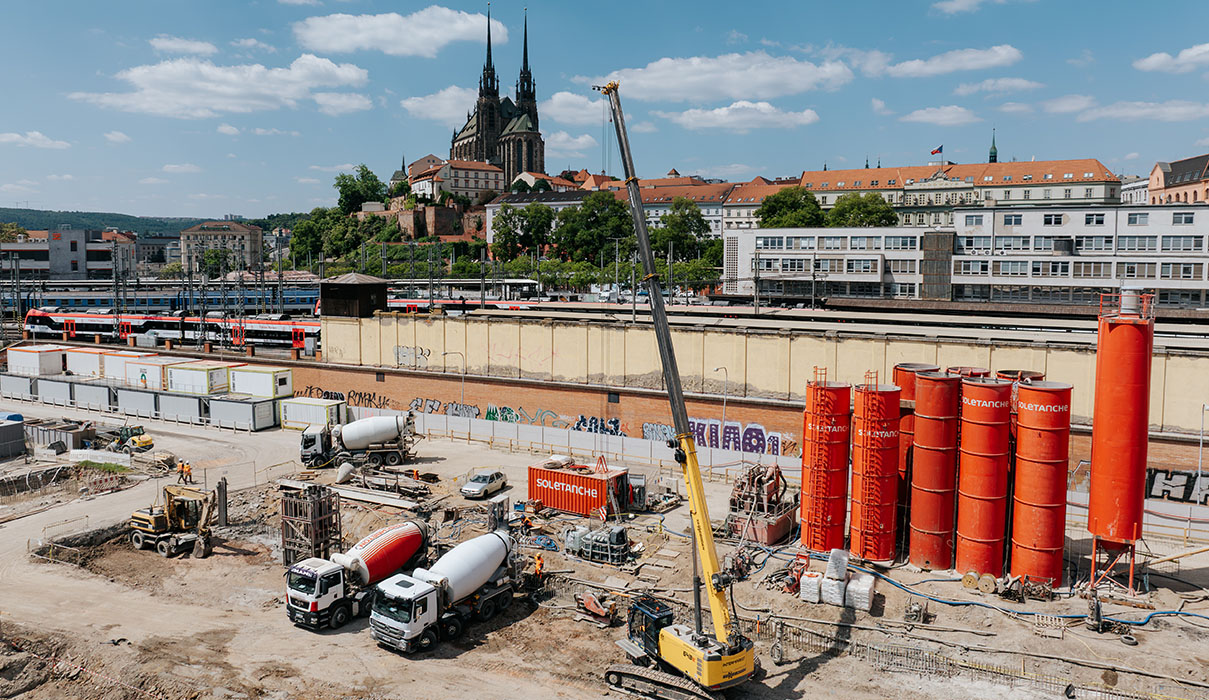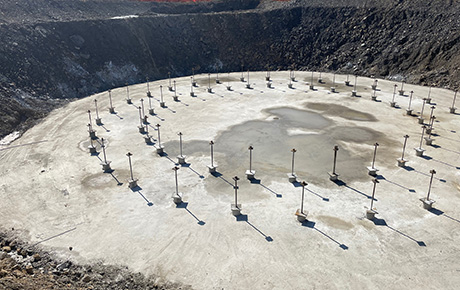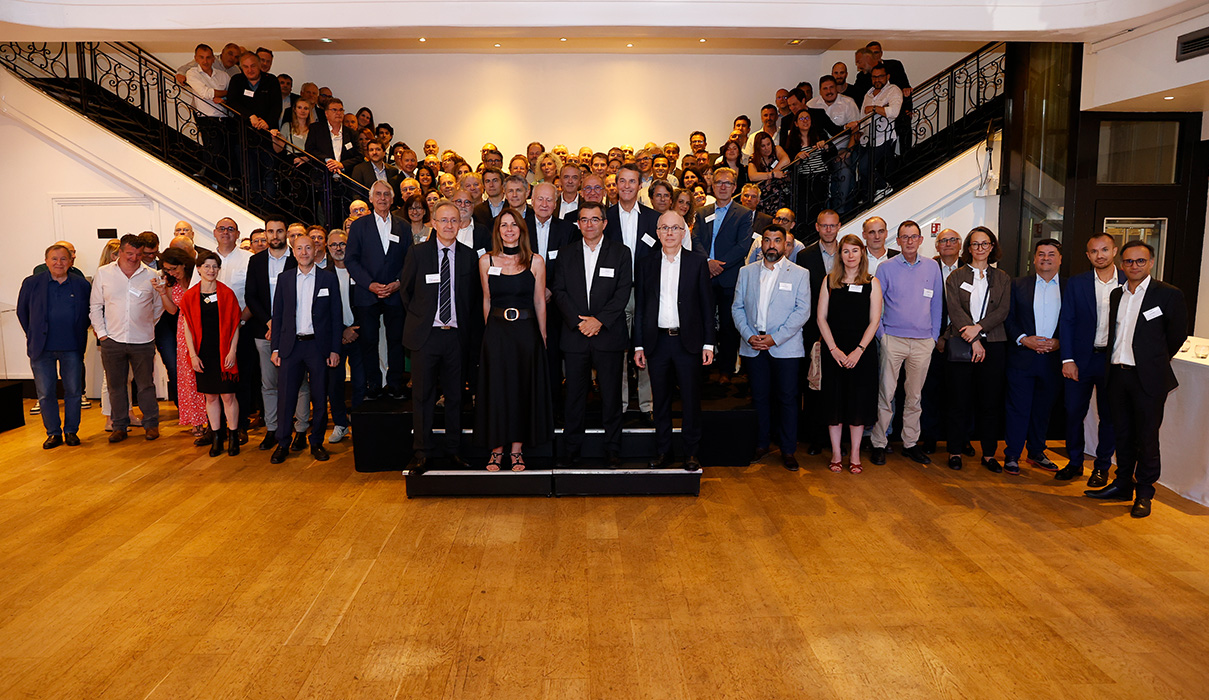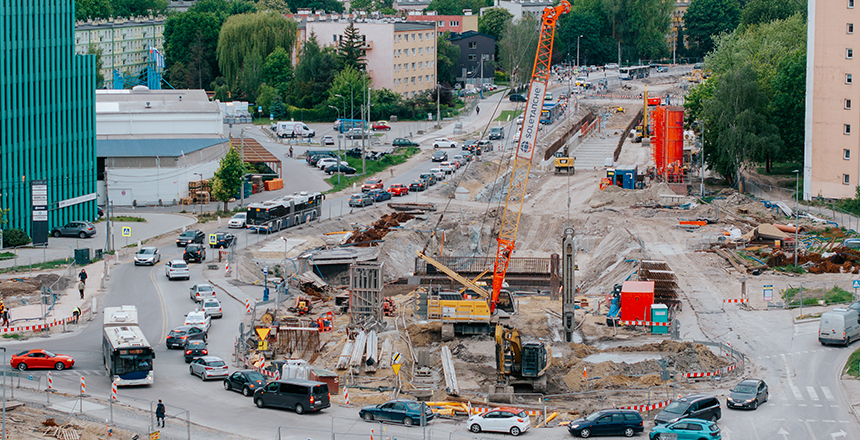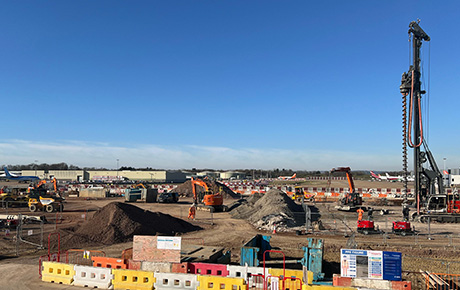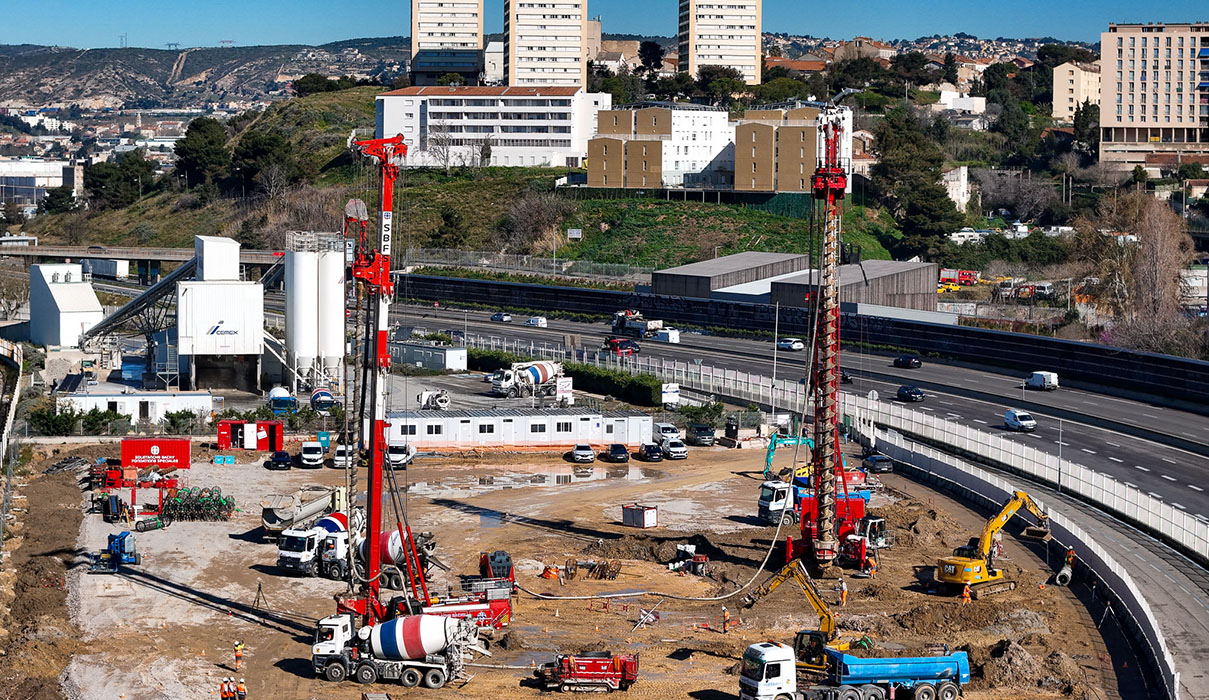April 20th, 2022
Austerlitz tank: O-Cell load test on barrettes
As part of a plan to improve the water quality in the Seine and the Marne, the City of Paris decided to construct a storage tank upstream of the Pont d’Austerlitz in order to reduce overflows from the sewerage network during period of heavy rain. This large structure would have a high retention capacity and be subject to significant uplift pressure. One of the project’s challenges was therefore to optimise the lengths of the slab-anchoring foundations. This was made possible by carrying out a load test on a barrette using the O-Cell method – a first in France!
As a reminder: the City of Paris Sanitation Division (SAP) entrusted the Impluvium consortium (comprising Soletanche Bachy France and Bessac) to build a tank to store and return water (the Austerlitz tank), as well as two structures to recover water from stormwater drains on either side of the Seine (the Valhubert and Tournaire shafts).
The work began in August 2020 and is set to take 44 months, the objective being to finish before May 2024. The project includes:
- A storage tank, 50m in diameter and with a capacity of 46,000m3, built under the shelter of a 1.2m thick diaphragm wall sunk to a depth of 62m.
- Two water intake structures on either side of the Seine, the first comprising a 0.8m-thick and 41m-deep diaphragm wall and, the second, a supported trench protected by jet grouting columns. The jet grouting work also provides a connection to the existing Buffon stormwater overflow.
- A DN 2500mm collector, sunk by Bessac with a microtunnelling machine from a starting shaft positioned alongside the tank. The 11m diameter shaft is lined with a 1m thick diaphragm wall.
One of the major technical points of the project is the slab-anchoring of the storage tank. This is subject to significant uplift pressure of nearly 300 kPa, which is insufficiently balanced by the weight of the hollow structure. Added to this uplift pressure is the difficulty of a slab positioned about 15m above expansive clay. The slab anchors are therefore subject to negative friction at that height and must be set deeper in the chalky bedrock.
The solution initially planned in the design consisted of building 236 micropiles and 20 barrettes more than 90m deep. They were also due to act as prefoundations during the works phase, the earthworks being cast-in-situ after construction of the cover slab. The contract included conducting an O-Cell test to optimise the barrette length.
The work on the main tank therefore progressed as follows: the diaphragm wall work on the tank, the dimensioning of which did not take account of the test results, was carried out over four months. During this period, the concrete of the test barrette increased in strength (one month), the load test was conducted over two to three days and the results were subject to an analysis report (three to four weeks).
The dimensioning of the foundations was then updated and approved by the various parties over the course of the remaining two months. Immediately after completion of the diaphragm wall of the tank, the barrettes could be progressively bored and concreted in parallel with the wall panels of the entry shaft during a second three-month work phase.
What is an O-Cell test?
The load method implemented for the project is called a “bi-directional test” or “O-Cell test”. It was developed in 1989 by Dr. J.O. Osterberg from Northwestern University in Chicago and has since been used to test thousands of foundations in more than 60 countries. The principle of the test is the embedding, in the foundation itself, of one or more jacks designed specifically for this purpose. The test uses the reaction of the foundation itself to calculate the necessary load on the other part of the foundation and determine the desired ground parameters. The project needed to use this method, which is recognised in standard NF EN ISO 22477-1, in order to characterise the friction in the chalk at a depth of around 60m. The main advantage of this O-Cell approach is application of the load directly at depth in the absence of a working mass, a factor which often limits the maximum load for conventional tests with head loading.
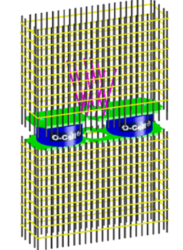
What does an O-Cell test involve?
In addition to the two 690mm-diameter embedded jacks, six levels of six strain gauges were distributed along the barrette to assess the dissipation of friction in the ground.
This system is supplemented by several displacement sensors arranged at different heights of the barrette and offering redundancy in order to assess the force-displacement curves of the gauges.
The load programme was executed in regular steps up to a maximum load of 26 MN. The strain gauges, distributed along the barrette, indicate the load absorbed from the point of application of the load to the upper level of the concrete. Using the modulus of the concrete and the cross-section of the foundation, it is then possible to calculate the strain at the level of the gauges and establish the friction mobilisation curves between each level of gauge.
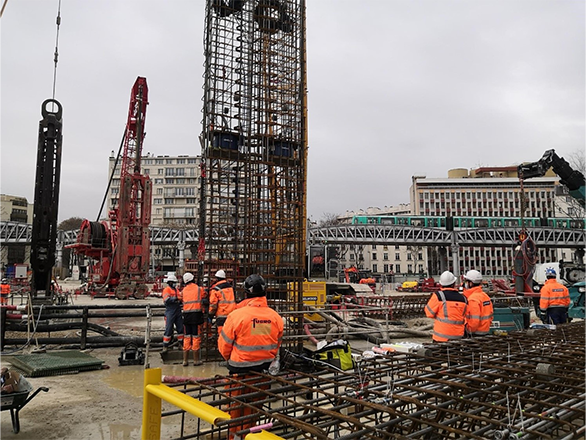
Taking into account of results in the dimensioning
The success of the O-Cell test not only enabled the barrette depth to be optimised, since the friction values were good, it was possible to consider removing the micropiles and replacing them with a few barrettes.
A decision was finally made to build 12 new barrettes, below the level of the slab so as not to interfere with the internal structure of the tank.
They are located consistently among the project’s 20 initial barrettes, with the central core being particularly reinforced. The thickness of the slab is slightly thickened to 1.50m.

